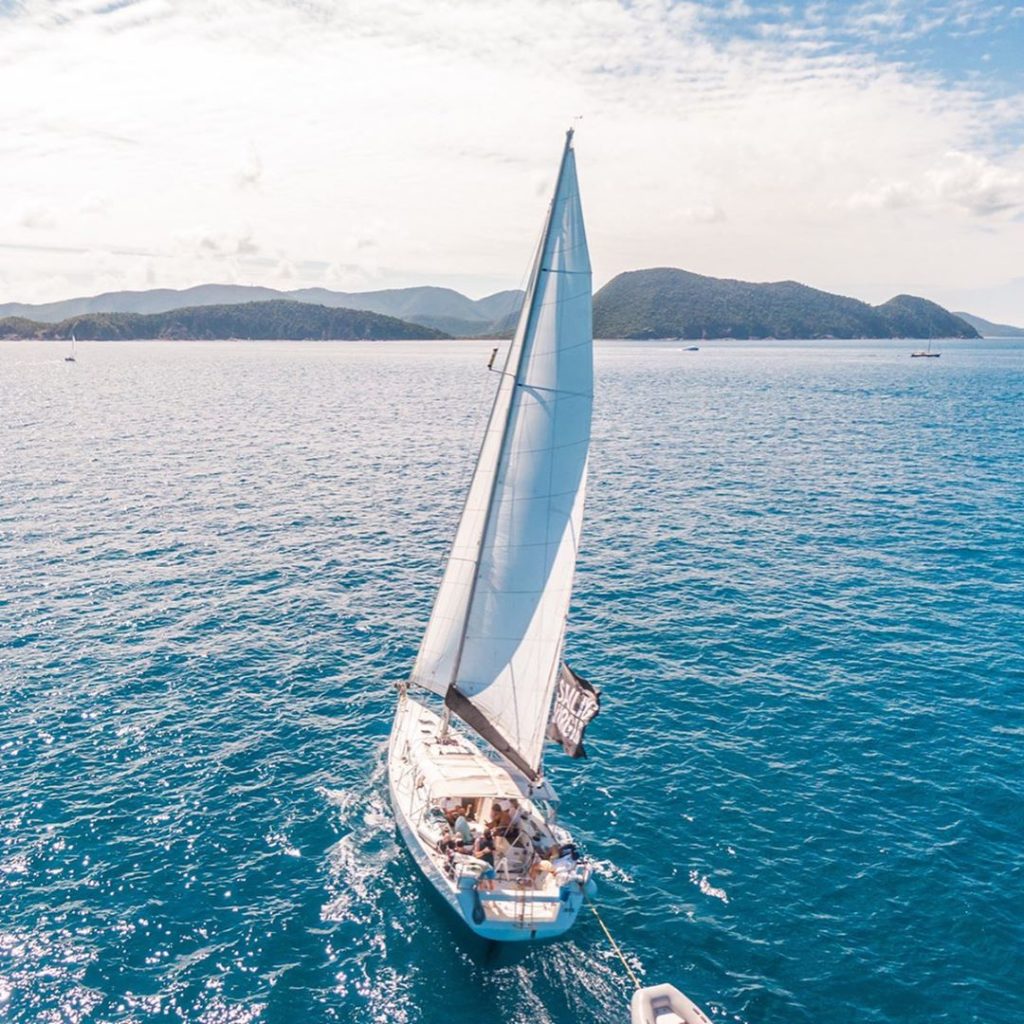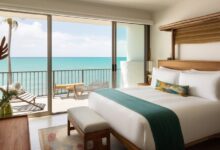Best British Virgin Islands Sailing Routes for Experienced Yachtsmen
Best British Virgin Islands sailing routes for experienced yachtsmen offer a thrilling blend of challenging navigation and breathtaking scenery. The turquoise waters, pristine beaches, and dramatic coastlines of the BVIs present a unique sailing experience, attracting seasoned sailors from around the globe. This guide explores optimal routes, considering factors such as wind patterns, currents, and ideal anchoring spots, ensuring a safe and rewarding journey for experienced yachtsmen.
We’ll delve into advanced sailing techniques, safety protocols, and island-specific considerations to help you plan an unforgettable voyage.
The British Virgin Islands boast a diverse range of sailing experiences, catering to various skill levels and preferences. From challenging passages that test navigational expertise to serene anchorages perfect for relaxation, the archipelago provides something for every seasoned sailor. Understanding the prevailing weather conditions, potential hazards, and the unique characteristics of each island is crucial for a successful and enjoyable trip.
This guide aims to equip experienced yachtsmen with the necessary knowledge to navigate these waters safely and efficiently, maximizing their exploration of this stunning Caribbean paradise.
The British Virgin Islands Sailing Experience
The British Virgin Islands (BVI) offer a unique sailing experience that particularly appeals to seasoned yachtsmen. The archipelago’s sheltered waters, numerous anchorages, and consistent trade winds provide a challenging yet rewarding environment for experienced sailors. The variety of sailing conditions, from calm bays perfect for leisurely exploration to exhilarating passages between islands, ensures a diverse and stimulating experience. The well-established navigational infrastructure, combined with the stunning natural beauty, makes the BVI a highly sought-after sailing destination for those seeking a sophisticated nautical adventure.The BVI’s climate is tropical, characterized by warm temperatures and consistent trade winds blowing from the east.
The sailing season generally runs from November to May, offering the most favorable conditions with steady breezes and less rainfall. While hurricanes are a possibility during the summer months (June to October), meticulous weather monitoring is standard practice for experienced sailors, allowing them to adjust their plans accordingly and avoid any potential risks. The transition periods between seasons can offer variable conditions, requiring adaptability and skilled navigation.
Navigational Challenges and Rewards in the BVI
Navigating the BVI presents a variety of challenges and rewards for experienced sailors. The numerous islands and cays create complex currents and tidal flows, requiring precise chart reading and an understanding of local conditions. Reefs and shallows are present throughout the archipelago, necessitating careful navigation, particularly in less-familiar areas. However, the rewards are plentiful. The stunning scenery, diverse anchorages, and opportunities for exploration make navigating the BVI a truly memorable experience.
Successfully navigating the challenging passages between islands, expertly handling the varied wind conditions, and safely anchoring in picturesque bays provide a deep sense of accomplishment for skilled yachtsmen. The well-maintained navigational aids and readily available charts, combined with the experience of local sailors and support services, mitigate many of the risks. For example, navigating the challenging passage between Jost Van Dyke and Virgin Gorda requires precise timing to account for currents and potential wind shifts, but the reward is the breathtaking beauty of the passage and the stunning anchorages on either side.
Popular Sailing Routes: Best British Virgin Islands Sailing Routes For Experienced Yachtsmen
The British Virgin Islands offer a plethora of exhilarating sailing routes for experienced yachtsmen, each presenting unique challenges and rewards. Choosing the right route depends on your desired level of difficulty, the time you have available, and the specific sights you wish to experience. This section details some of the most popular routes, outlining their advantages and disadvantages to help you plan your perfect BVI sailing adventure.
Popular Sailing Routes: A Comparative Overview
The following table compares five popular sailing routes, considering distance, estimated sailing time (under ideal conditions), notable anchorages, and points of interest. These estimations are based on average sailing speeds and can vary depending on weather conditions and boat type.
| Route Name | Distance (nm) | Estimated Sailing Time | Highlights |
|---|---|---|---|
| Norman Island Loop | 15-20 | 4-6 hours | The Caves, Willy T’s bar, snorkeling at The Indians |
| The Baths (Virgin Gorda) | 10-15 | 3-5 hours (depending on starting point) | The Baths National Park, Devil’s Bay, Spring Bay |
| Anegada Passage | 25-35 | 8-12 hours | Anegada Island (lobster, beaches, flamingoes), challenging open water sailing |
| Jost Van Dyke Exploration | 10-15 | 3-5 hours | White Bay, Foxy’s Tamarind Bar, Great Harbour |
| Peter Island & Salt Island Circuit | 20-25 | 6-8 hours | Peter Island’s beaches, Salt Island’s ruins and snorkeling |
Route Advantages and Disadvantages, Best British Virgin Islands sailing routes for experienced yachtsmen
Each route offers a unique sailing experience. The Norman Island loop, for example, is relatively short and sheltered, making it ideal for a shorter day trip or for sailors less comfortable with open water sailing. However, it can be crowded, especially during peak season. The Anegada Passage, on the other hand, presents a more challenging open-water experience, rewarding experienced sailors with stunning views and a sense of accomplishment but demanding careful planning and weather monitoring due to potential strong currents and winds.
Planning your Best British Virgin Islands sailing routes requires careful consideration, especially for experienced yachtsmen seeking challenging yet rewarding voyages. The journey itself might influence your decision on whether to splurge; consider if the added comfort is worth the cost, as explored in this article on is it worth it to pay for a luxury flight experience.
Ultimately, choosing the right BVI sailing route hinges on your skill level and desired adventure.
The Baths route is popular for its incredible natural beauty, but can be busy and requires careful navigation through shallow waters. Jost Van Dyke offers a mix of relaxation and vibrant social scenes, while the Peter Island and Salt Island circuit combines historical exploration with beautiful scenery.
Sample Week-Long Itinerary
This itinerary incorporates the Norman Island Loop and the Jost Van Dyke exploration, offering a balance of challenging sailing and relaxed island hopping. It assumes a departure from Road Town, Tortola.Day 1: Arrival in Road Town, Tortola, provisioning, and settling in.Day 2: Norman Island Loop – explore the Caves, enjoy Willy T’s, and snorkel at The Indians.Day 3: Sail to Jost Van Dyke – relax on White Bay, enjoy the lively atmosphere at Foxy’s.Day 4: Explore Jost Van Dyke – visit Great Harbour, enjoy snorkeling or watersports.Day 5: Sail back towards Tortola, stopping at a secluded anchorage for the night.Day 6: Explore Tortola – visit a local beach, enjoy some onshore activities.Day 7: Departure from Road Town.
Advanced Sailing Techniques and Considerations
Navigating the British Virgin Islands (BVI) requires more than just basic sailing skills; experienced yachtsmen will find themselves challenged by the unique conditions and demanding navigational aspects of this archipelago. This section details the advanced techniques and considerations necessary for a safe and rewarding sailing experience in the BVIs.Advanced navigation skills are paramount in the BVI. The intricate network of islands, shallow reefs, and unpredictable currents demand a high level of proficiency.
Advanced Navigation in the BVI
Celestial navigation, while less frequently used with modern GPS technology, remains a valuable backup system, particularly in situations where electronic navigation fails. Proficient chart reading is essential for understanding water depths, identifying hazards like reefs and submerged rocks, and planning safe routes. GPS, while a primary navigation tool, requires careful monitoring and understanding of its limitations, including potential signal loss in certain areas.
Experienced sailors should always cross-reference GPS data with paper charts and visual landmarks to ensure accurate positioning. Understanding tidal patterns and their impact on navigation is also crucial, as strong currents can significantly affect boat speed and course.
Challenges of Strong Winds, Currents, and Shallow Reefs
The BVI experiences strong winds, particularly during the trade wind season. These winds can create challenging sailing conditions, requiring skilled boat handling and reefing techniques. Sudden squalls can also occur, demanding quick reactions and a thorough understanding of weather forecasting. Strong currents, especially around the islands and in narrow passages, can significantly impact boat speed and make maneuvering more difficult.
Navigating through shallow reefs requires meticulous attention to depth soundings and careful course planning, as even a minor miscalculation can lead to grounding. The reefs themselves present a visual challenge; the water clarity can vary dramatically, and submerged hazards are not always readily apparent.
Planning a challenging yet rewarding sailing adventure through the Best British Virgin Islands routes requires careful consideration. Experienced yachtsmen often prioritize the more demanding passages, and getting there comfortably is key; securing your travel is made easier by learning how to finding affordable luxury flights using points and miles , thus maximizing your budget for the actual sailing experience.
This allows for a smoother transition into exploring the stunning navigational challenges the BVI offers seasoned sailors.
Anchoring Best Practices and Hazard Avoidance
Anchoring in the BVI requires careful consideration of several factors. Selecting a suitable anchorage involves assessing the bottom type (sand, rock, or coral), water depth, and protection from wind and waves. Proper anchoring techniques, including using sufficient scope (the ratio of rode – anchor line – to depth), are critical to prevent dragging. Visual inspection of the anchoring area is recommended, using the boat’s depth sounder and a careful observation of the surrounding waters to avoid obstacles.
Recognizing and avoiding potential hazards such as shallow reefs, strong currents, and other vessels is crucial for safe anchoring. In crowded anchorages, proper communication with other vessels is essential.
Exploring Specific Islands and Anchorages
Experienced yachtsmen seeking to explore the British Virgin Islands will find a wealth of diverse anchorages and sailing experiences. The islands offer a range of challenges and rewards, from sheltered bays perfect for a relaxing evening to exposed anchorages demanding precise boat handling. Choosing the right island and anchorage depends on the prevailing weather conditions, the desired level of seclusion, and the available facilities.
Anegada: A Unique Sailing Destination
Anegada, a low-lying coral island, presents a unique sailing experience. Its shallow surrounding waters require careful navigation, especially during low tide, demanding attention to depth sounders and local knowledge. The approach to the island is marked by a series of reefs and sandbars, making careful chart study and planning essential. The best anchorages are found in the sheltered bays on the north and west sides of the island, offering good protection from the prevailing easterly winds.
Planning your British Virgin Islands sailing adventure? Experienced yachtsmen often favor the challenging yet rewarding routes around Jost Van Dyke and Anegada. Before you set sail, consider your journey to the islands; researching the best luxury airlines for long haul flights to Asia can make the pre-sailing experience as enjoyable as the voyage itself, especially if you’re flying from far afield.
Once you arrive, the pristine waters of the BVI await your expert navigation.
Loblolly Bay is a popular choice, known for its calm waters and proximity to the island’s amenities. Ideal sailing conditions involve light to moderate easterly trade winds. Potential challenges include strong currents, shallow waters, and the need for precise navigation around reefs. The island offers exceptional snorkeling and diving opportunities on the extensive coral reefs.
Virgin Gorda: Variety of Anchorages and Activities
Virgin Gorda, the third-largest island in the BVI, offers a diverse range of anchorages to suit various preferences. The North Sound, a vast, sheltered bay, provides numerous calm anchorages, many with easy access to restaurants and bars. Spanish Town, the main settlement, offers supplies and provisions. For a more secluded experience, the anchorages on the south side of the island, such as Savannah Bay, provide stunning scenery and tranquil waters.
Ideal sailing conditions include light to moderate trade winds, though the North Sound can be susceptible to strong gusts depending on wind direction. Potential challenges may include crowded anchorages during peak season in the North Sound. Virgin Gorda’s famous Baths, a unique rock formation with stunning swimming and snorkeling opportunities, are a major attraction.
Norman Island: The Caves and the William Thornton
Norman Island, famously associated with Robert Louis Stevenson’s “Treasure Island,” offers a captivating blend of history and stunning natural beauty. The Caves, a series of intriguing sea caves, are a must-see for any visitor. The island’s western anchorages, such as The Bight, provide good shelter and relatively calm waters. The approach to these anchorages requires careful navigation around several small islands and reefs.
Planning the perfect British Virgin Islands sailing itinerary for experienced yachtsmen requires careful consideration of wind patterns and optimal routes. After all, reaching your idyllic anchorage is only half the journey; the other involves the pre-trip logistics, such as deciding on the best way to get there, which often involves a comparison of luxury flight experiences between airlines, as detailed in this helpful article: comparing luxury flight experiences between airlines.
Ultimately, a smooth flight enhances the overall sailing experience, ensuring you arrive refreshed and ready to navigate the stunning waters of the BVI.
Ideal sailing conditions involve light to moderate trade winds, although the exposed western side can experience stronger winds and seas. Potential challenges include navigating the reefs surrounding the island, especially in less-than-ideal visibility. The William Thornton, a wrecked ship on the south coast, is a popular dive site. The combination of historical intrigue, exceptional snorkeling, and various anchorage options make Norman Island a worthwhile destination.
Safety and Navigation Best Practices
Even experienced yachtsmen benefit from a rigorous review of safety protocols when navigating the BVI’s challenging yet rewarding waters. The unique conditions, including strong currents, unpredictable squalls, and numerous reefs, demand a proactive approach to safety and navigation. This section Artikels essential best practices to ensure a smooth and secure sailing experience.Experienced sailors in the BVI must maintain a high level of vigilance and preparedness.
Planning your Best British Virgin Islands sailing routes requires careful consideration, especially for experienced yachtsmen seeking challenging yet rewarding voyages. Before you even set sail, however, remember to meticulously check for hidden fees and extra charges on luxury flights to avoid , as these can significantly impact your overall budget. Returning to the BVI, remember to factor in potential weather conditions when finalizing your itinerary for a truly exceptional sailing experience.
The archipelago’s beauty often masks potential dangers, requiring a careful balance between enjoying the journey and adhering to strict safety procedures. This includes regular equipment checks, thorough weather monitoring, and a well-defined communication plan.
Emergency Procedures and Communication Strategies
Effective communication and established emergency procedures are paramount in the BVI. Cell phone reception can be unreliable, making VHF radio communication essential. All vessels should carry a properly functioning VHF radio with a DSC (Digital Selective Calling) capability, enabling distress calls to be transmitted automatically with the vessel’s position. Furthermore, a comprehensive emergency plan should be in place, including pre-designated rendezvous points and contact information for local authorities and emergency services.
Regular communication checks with other vessels in your flotilla or with shore-based contacts should also be part of the plan. In case of an emergency, immediate notification to relevant authorities is critical, followed by clear and concise communication of the situation, vessel location, and the nature of the emergency.
Weather Forecasting and Route Planning for Safe Navigation
Accurate weather forecasting is crucial for safe navigation in the BVI. Tropical storms and squalls can develop rapidly, creating challenging conditions. Experienced sailors should utilize multiple weather forecasting sources, including GRIB files, satellite imagery, and local weather reports, to build a comprehensive understanding of the prevailing and predicted weather patterns. Route planning should take into account potential weather impacts, including wind speed and direction, sea state, and current strength.
Careful consideration should be given to alternative routes and safe havens in case of unexpected weather changes. For example, a planned route might need to be adjusted to avoid known areas prone to sudden squalls, or a safe harbor might need to be selected in anticipation of worsening conditions.
Potential Hazards and Mitigation Strategies
The BVI presents various navigational hazards. Reefs, shallow waters, and strong currents are common challenges. Experienced sailors should use up-to-date charts, GPS navigation, and depth sounders to avoid running aground. A thorough understanding of tidal patterns and currents is also essential for safe navigation, especially in narrow channels and passages. For instance, navigating through the Sir Francis Drake Channel requires careful attention to the strong currents, and knowledge of the tidal streams is crucial for safe passage.
Furthermore, vigilance for other vessels and potential obstructions is necessary, and maintaining proper lookout procedures is vital to prevent collisions. Sudden squalls are a significant hazard. Monitoring weather forecasts and having a plan to seek shelter quickly are crucial. Carrying appropriate safety equipment, such as life jackets, flares, and a first-aid kit, is also essential. In the event of a collision or grounding, immediate assessment of damage and initiation of appropriate emergency procedures are paramount.
Illustrative Sailing Routes

Source: magnificentworld.com
The British Virgin Islands offer a diverse range of sailing experiences, catering to both relaxed cruising and challenging adventures. Choosing the right route depends on the crew’s experience and desired level of difficulty. Below are two contrasting examples, one demanding and one more leisurely, illustrating the variety available.
Challenging Route: Norman Island to Jost Van Dyke via the Caves
This route presents a demanding yet rewarding experience, particularly for those seeking navigational challenges and exhilarating sailing. The journey begins at Norman Island, famous for its legendary Pirates’ Bight and underwater caves. Departing from Pirates’ Bight, sailors will encounter unpredictable wind conditions, often gusty and shifting, particularly around the numerous small islands and cays. Strong currents can also be present, especially around the entrance to the caves.
Navigating through the caves requires precise maneuvering and excellent situational awareness due to the shallow water and potential for strong tidal flows. The scenery is breathtaking, with towering cliffs, hidden coves, and vibrant underwater life visible through crystal-clear waters. After navigating the caves, the route continues to Jost Van Dyke, requiring careful attention to wind shifts and potential squalls, especially during the afternoon.
Planning your British Virgin Islands sailing adventure? Experienced yachtsmen often favor the challenging yet rewarding routes around Jost Van Dyke and Anegada. Before you set sail, however, you might want to consider your travel arrangements; finding out how much does a first class flight on emirates cost could help budget your trip. Once you arrive, the pristine waters and stunning scenery of the BVI await your exploration.
Recommended sailing techniques include reefing early, adjusting sail trim frequently, and maintaining constant vigilance of the surrounding environment.
Scenic and Relaxed Route: Virgin Gorda to Anegada
This route offers a more relaxed pace, perfect for experienced sailors seeking a visually stunning cruise without the intensity of challenging navigation. The journey starts from Virgin Gorda, known for its stunning beaches like The Baths. The sailing is generally straightforward, with prevailing trade winds offering consistent conditions. The route passes by several smaller islands, each offering beautiful views and potential snorkeling spots.
The highlight is the arrival at Anegada, a low-lying coral island with pristine beaches and calm, turquoise waters. The scenery throughout is consistently beautiful, with clear waters, abundant marine life, and picturesque coastlines. The relatively calm waters and predictable wind conditions make this a suitable route for experienced sailors seeking a more leisurely experience. Navigational challenges are minimal, focusing primarily on maintaining a comfortable speed and enjoying the scenic surroundings.
Route Comparison
The Norman Island to Jost Van Dyke route through the caves emphasizes navigational skill and the ability to handle challenging conditions. Strong winds, currents, and the need for precise maneuvering through shallow waters make this a demanding route suitable only for experienced and confident sailors. Conversely, the Virgin Gorda to Anegada route provides a more relaxed and scenic experience, prioritizing visual enjoyment and a comfortable pace.
While navigational skill is still required, the conditions are generally less challenging, allowing for a more leisurely cruise. The contrast highlights the diverse sailing experiences available in the British Virgin Islands, catering to a broad spectrum of sailor expertise and preferences.
End of Discussion
Navigating the British Virgin Islands presents a rewarding challenge for experienced yachtsmen, demanding a blend of skill, planning, and respect for the elements. By carefully considering the routes Artikeld, understanding the potential hazards, and adhering to safety protocols, sailors can unlock the full potential of this stunning archipelago. From the exhilarating thrill of conquering a challenging passage to the peaceful tranquility of a secluded anchorage, the BVI offers an unforgettable sailing experience.
Remember to prioritize safety, respect the environment, and embrace the beauty of this remarkable sailing destination.
Popular Questions
What is the best time of year to sail in the British Virgin Islands?
The best time to sail in the BVIs is during the winter months (November to April), when the weather is generally calm and sunny with consistent trade winds.
What type of boat is best suited for sailing in the BVIs?
A monohull or catamaran of at least 35 feet is generally recommended, offering sufficient space and stability for navigating the sometimes challenging conditions.
Are there any mandatory certifications or licenses required for sailing in the BVIs?
While not mandatory, possessing a valid RYA or equivalent sailing certification is highly recommended, especially for navigating challenging passages.
What are the typical costs associated with a week-long sailing trip in the BVIs?
Costs vary greatly depending on the type of boat, charter company, and level of luxury. Expect to pay several thousand dollars for a week-long charter, excluding flights and provisioning.
What communication systems should I have on board?
A VHF radio for communicating with other vessels and shoreside authorities is essential. A satellite phone or EPIRB is also highly recommended for emergencies.







